In the life of rural America, rocky outcrops include the possibility of a hole.
 Peter Sutherland is drawn to places that are filler on the country’s psychic map, places where time lags between meals, and nothing in particular looms on the horizon. What drew him to the hole above was not the possibility of a bear within but the youth without. They decorated the edge of the dark as a homage.
Peter Sutherland is drawn to places that are filler on the country’s psychic map, places where time lags between meals, and nothing in particular looms on the horizon. What drew him to the hole above was not the possibility of a bear within but the youth without. They decorated the edge of the dark as a homage.
Boredom interests him. Sutherland makes art of odd games, twists of light, lying around. Ordinary burdens and accidental beauties pause for him to take their picture. About his exhibit last year at the ATM Gallery, Blame It On The Dog, Roberta Smith wrote:
Mr. Sutherland is something of a multitasker. In addition to writing
rather well (in the show’s small catalog), he is also a filmmaker.
Whatever he does seems to celebrate the potential for inspiration in
even the most pedestrian and barren facts of American life. Every
instant is a possible image; every image a likely story.
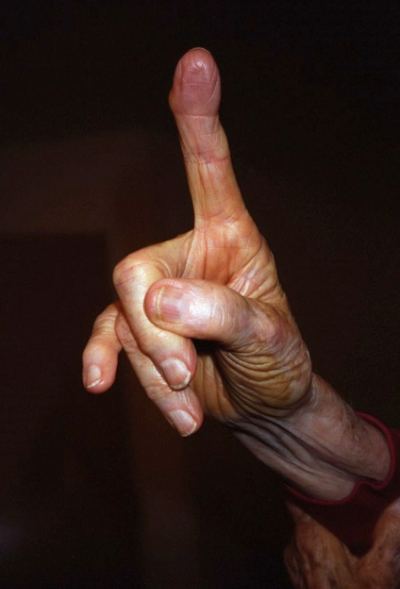

 The last image, of the artist balancing a knife on his palm, is a still from a video. It’s the first thing you see upon entering Lawrimore Project. If you’re not planning to enter Lawrimore Project, you can see the video online by going to Sutherland’s Website, here, and clicking the last word of his essay, which is joy.
The last image, of the artist balancing a knife on his palm, is a still from a video. It’s the first thing you see upon entering Lawrimore Project. If you’re not planning to enter Lawrimore Project, you can see the video online by going to Sutherland’s Website, here, and clicking the last word of his essay, which is joy.
Through June 26.



 Plank Lean Painting, detail
Plank Lean Painting, detail What symphonies of old-time push and pull are buried underneath the black? Leftover colors gather at the painting’s edge like clues at a crime scene. And this is the truth about painting. Dadson’s attempt to kill it gave it license to rise again in another form, from bloom to blight, channeling Rothko.
What symphonies of old-time push and pull are buried underneath the black? Leftover colors gather at the painting’s edge like clues at a crime scene. And this is the truth about painting. Dadson’s attempt to kill it gave it license to rise again in another form, from bloom to blight, channeling Rothko. Making a painting from Iraqi voter ink embraces accelerated change. The piece will continue to develop in the light, losing purple and gaining gold, its specifics lost in an atmosphere over which the artist has no control. For someone who is not primarily a painter, his contributions to a medium that only momentarily has his attention are extraordinary.
Making a painting from Iraqi voter ink embraces accelerated change. The piece will continue to develop in the light, losing purple and gaining gold, its specifics lost in an atmosphere over which the artist has no control. For someone who is not primarily a painter, his contributions to a medium that only momentarily has his attention are extraordinary.  In the middle of the
In the middle of the  Browning, detail:
Browning, detail: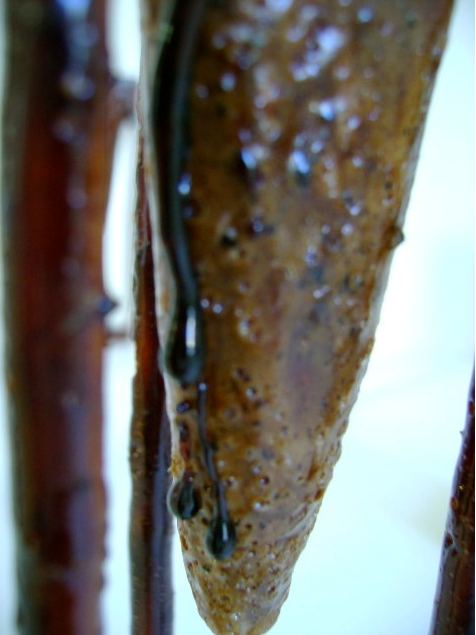 Titled Tradition as Adapative Strategy, Browning’s foray into the world of back-porch whittlers builds the conceptual from a foundation of masculine craft. Each piece comes from one block of wood he carved into a cone suspended from a brace. He poured the pitch into the cones, which are also funnels.
Titled Tradition as Adapative Strategy, Browning’s foray into the world of back-porch whittlers builds the conceptual from a foundation of masculine craft. Each piece comes from one block of wood he carved into a cone suspended from a brace. He poured the pitch into the cones, which are also funnels.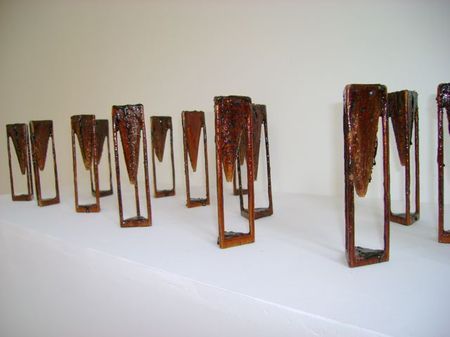
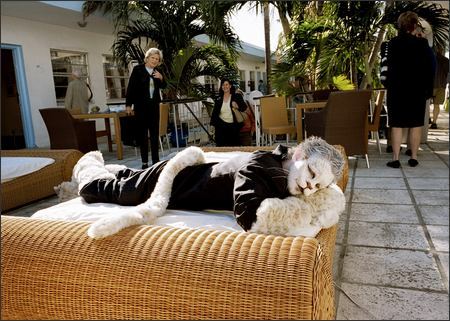

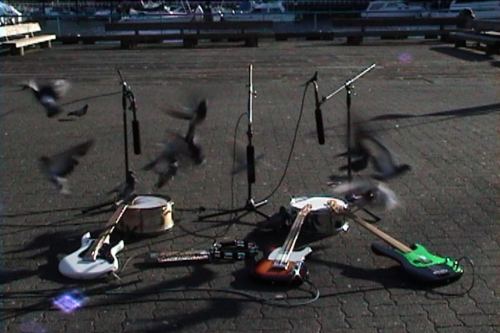 The Peckers in concert
The Peckers in concert  The sound’s the thing, a random clack-clack fused with bells. Reminds me of a fragment of a F. R. Higgins’
The sound’s the thing, a random clack-clack fused with bells. Reminds me of a fragment of a F. R. Higgins’  These people are going to make “classical techniques viable options”? Ingres would have laughed them out of his studio. They’re going for the silky sublime, of which the 19th Century French NeoClassicist was master. What they deliver is competent sign painting. From a distance and viewed from a moving car, their mimesis might pass muster.
These people are going to make “classical techniques viable options”? Ingres would have laughed them out of his studio. They’re going for the silky sublime, of which the 19th Century French NeoClassicist was master. What they deliver is competent sign painting. From a distance and viewed from a moving car, their mimesis might pass muster.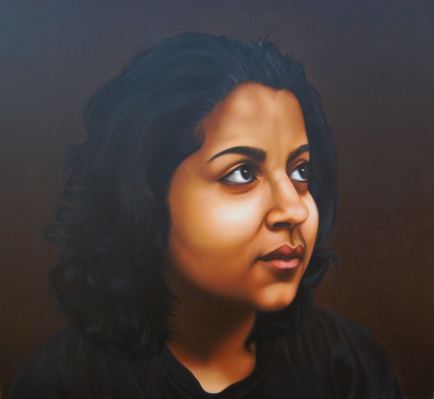 In a gallery, a good gallery, it’s a disgrace. Painting is not limping along, needing an assist from whatever rotten crutch is on offer. Painting needs Davis & Langlois like a fish needs a bicycle.
In a gallery, a good gallery, it’s a disgrace. Painting is not limping along, needing an assist from whatever rotten crutch is on offer. Painting needs Davis & Langlois like a fish needs a bicycle. The core of this exhibit made a previous appearance at the
The core of this exhibit made a previous appearance at the 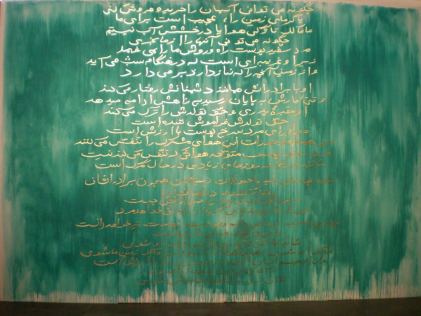 Through June 19.
Through June 19.  The room around you is a house. Your house is your body bubble. Invaded by misfortune, fortified by paranoia, your house is your thickest hide. It’s shaped in your image, if you have an image and aren’t just living there, having nowhere else to go.
The room around you is a house. Your house is your body bubble. Invaded by misfortune, fortified by paranoia, your house is your thickest hide. It’s shaped in your image, if you have an image and aren’t just living there, having nowhere else to go.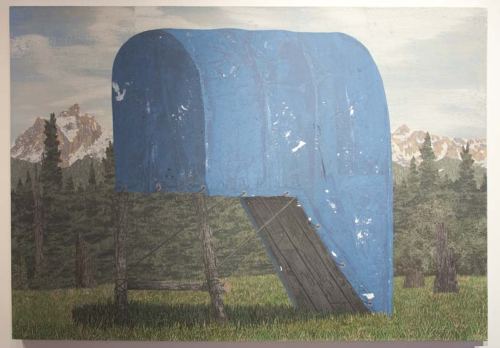 Whiting Tennis builds and/or paints shelters that are spiritual containers for the thing contained. Their oddity derives from the inability of their inhabitants to focus their projections. His current exhibit at
Whiting Tennis builds and/or paints shelters that are spiritual containers for the thing contained. Their oddity derives from the inability of their inhabitants to focus their projections. His current exhibit at 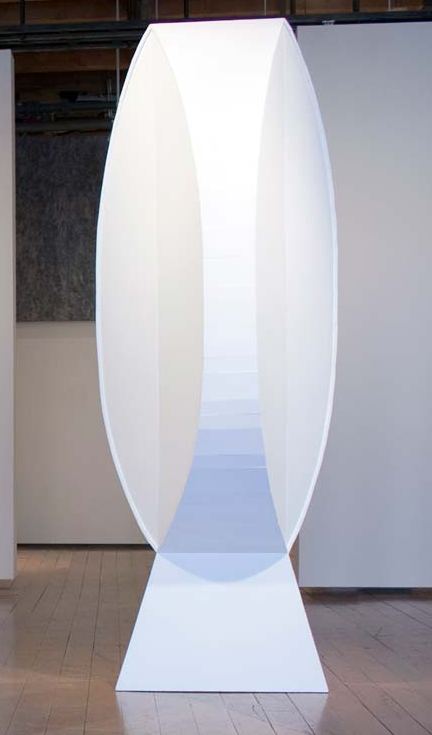 STILL LIFE WITH BIRDBATH, 2010
STILL LIFE WITH BIRDBATH, 2010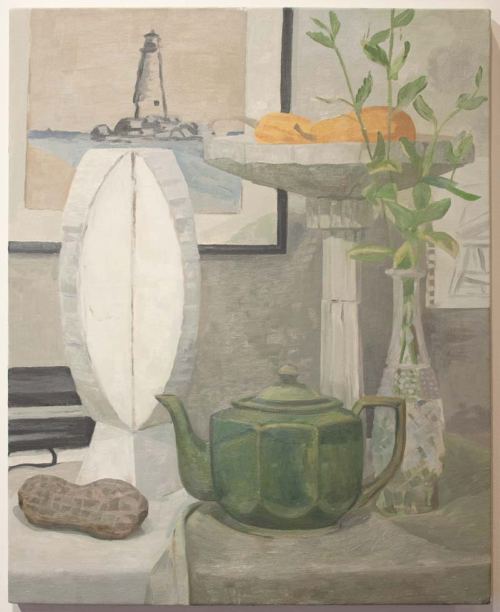 BROWN SHELF, 2010
BROWN SHELF, 2010